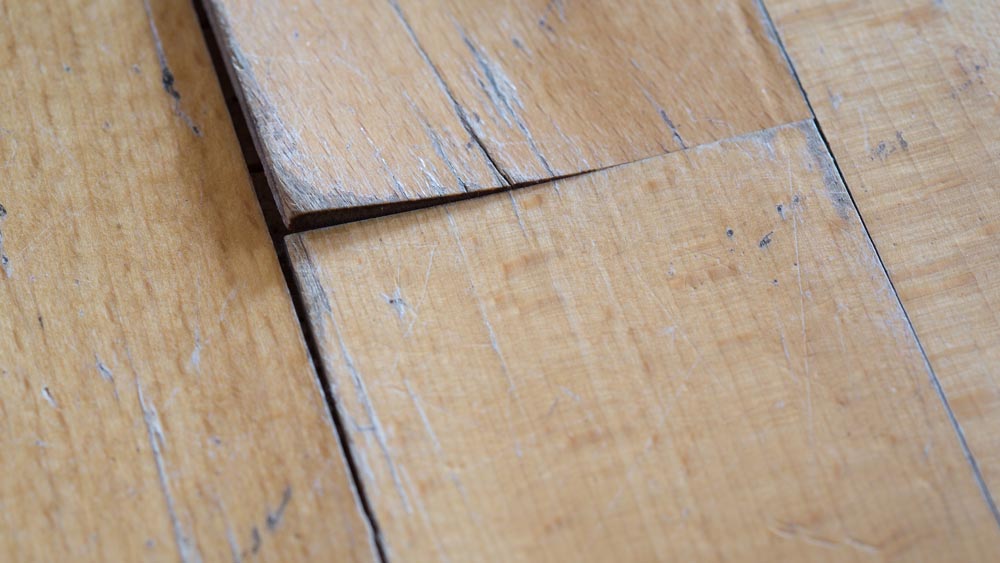If you own a home, then water damage is one of the biggest risks you face. Water damage can cause problems in every aspect of your property, from weakening the structural integrity to destroying precious memories stored away. One area where water damage can be especially detrimental is your subfloor. Depending on how quickly you address the issue and begin repairs, it may be necessary for you to replace your entire subflooring. Here we'll discuss when replacement must take place following exposure to water or moisture - so read on to learn everything about replacing subfloors from our Spokane water damage experts at Safeway Restoration!
Understanding the Signs of Water Damage in Your Subfloor
Water damage can wreak havoc on a subfloor if left unnoticed or untreated. As a homeowner, it's important to be able to identify the signs of water damage in order to avoid further problems. Some common indications of subfloor water damage include warping or buckling, discoloration or staining, and a musty or damp odor. Additionally, if you notice any soft spots or areas of the floor that feel "spongy" when you walk on them, it's likely that they have been compromised by water. By taking the time to learn these indicators and closely monitoring your floors for any changes, you can help prevent costly repairs down the line.
What Causes Subfloor Water Damage and How it Can be Prevented
Subfloor water damage can be a nightmare for homeowners, and understanding its causes is key to preventing it from happening. One of the primary culprits is moisture buildup caused by poor ventilation or leaky pipes. This can lead to mold growth, buckling of the floorboards, and even structural damage. Another major cause is flooding, whether it be from a burst pipe, natural disaster, or other unforeseen circumstances.
To prevent subfloor water damage, it is crucial to regularly inspect pipes for leaks, maintain proper ventilation in your home, and invest in flood insurance if you live in an area prone to natural disasters. Taking proactive measures can save you time, money, and stress down the line.
The Process of Removing and Replacing a Damaged Subfloor
One of the most important aspects of any home renovation project is ensuring that the foundation of your floor is stable and secure. This involves removing and replacing a damaged subfloor, a process that may seem overwhelming to homeowners who lack experience in construction. Fortunately, with the right tools and knowledge, it is a task that can be accomplished with relative ease.
The first step is to carefully inspect the subfloor and assess the extent of the damage, as well as identify any potential underlying issues that may have contributed to the damage. From there, it is a matter of removing the damaged sections, ensuring that the new materials are properly installed, and taking the time to ensure that the subfloor is level and solid. While the process may be time-consuming, it is an essential component of any flooring renovation project and will pay dividends in the long run by providing a stable foundation for your home.
Benefits of Replacing a Damaged Subfloor
Replacing a damaged subfloor may seem like a daunting task, but the benefits far outweigh the temporary inconvenience. A strong, sturdy subfloor is crucial in supporting the weight of your flooring and preventing costly repairs down the line. By replacing a damaged subfloor, you can ensure that your new flooring will be installed correctly and will last for years to come. It also provides an opportunity to inspect the area beneath the subfloor and address any underlying issues such as water damage or pests.
Investing in a new subfloor can increase the resale value of your home and give you peace of mind knowing that your flooring is secure and stable. With proper installation and maintenance, a new subfloor can be a valuable investment in the longevity and safety of your home.
Best Practices for Keeping Your Home's Floors in Good Condition
Maintaining pristine floors is key if you want your home to look its best. Whether you have hardwood, tile, or carpet, following some simple best practices can help keep your floors in excellent condition. For hardwood floors, be sure to sweep or vacuum regularly to remove any dust and dirt that can scratch the surface. Avoid using excess water and harsh chemicals when mopping, and always use furniture pads to protect against scratches and dents.
For tile floors, get rid of any spills or stains right away to prevent discoloration. Invest in a good quality cleaning solution that is safe for your specific type of tile. And for carpeted floors, vacuum regularly to keep dirt and dust from getting ground in, and schedule a professional cleaning every 6-12 months to get rid of any deep-set stains or dirt. By following these simple best practices, you can keep your floors looking like new for years to come.
Ultimately, subfloor water damage can lead to more issues rather than leaving it untouched, so recognizing the signs early and taking action to replace your subfloor accordingly is extremely important. Being proactive in terms of checking for evidence of water damage after or before dealing with plumbing leaks, flooding from external sources, or other similar occurrences will help you prevent long-term problems and costly repairs.
Safeway Restoration hopes that this article provided you with helpful information about when and why you should replace a subfloor due to water damage. This knowledge can help ensure that you have healthy and safe floors in your Spokane home for many years to come! So, take a few extra steps now to maintain the health of your subfloors and enjoy the peace of mind that comes with it later.

